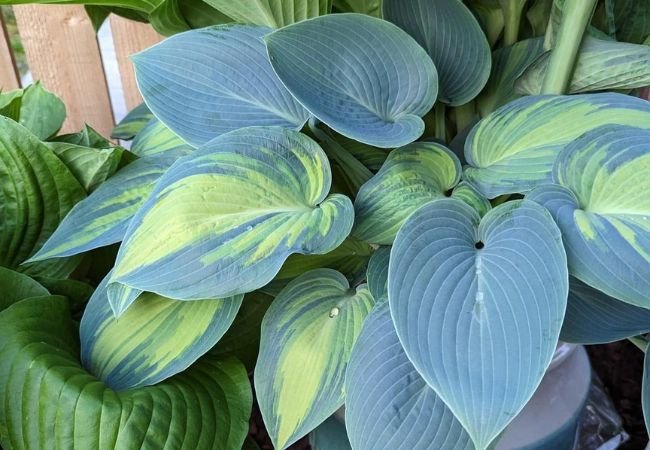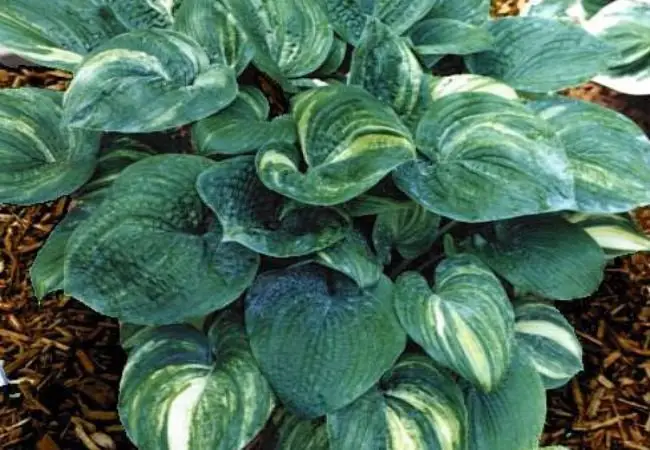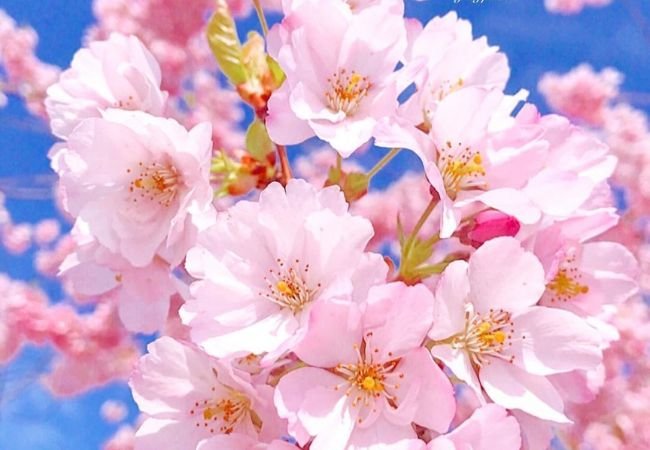Discover the Bleuphoria Hosta: a stunning blue-leaved perennial perfect for shade gardens. Learn about its characteristics, care tips, and how to showcase this eye-catching plant in your 2024 landscape design.
The Bleuphoria Hosta is a captivating blue-leaved perennial that brings a cool, refreshing aesthetic to shade gardens. Known for its striking color, impressive size, and low-maintenance nature, this hosta variety has become increasingly popular among gardeners seeking to add a touch of ‘blue-phoria’ to their outdoor spaces.
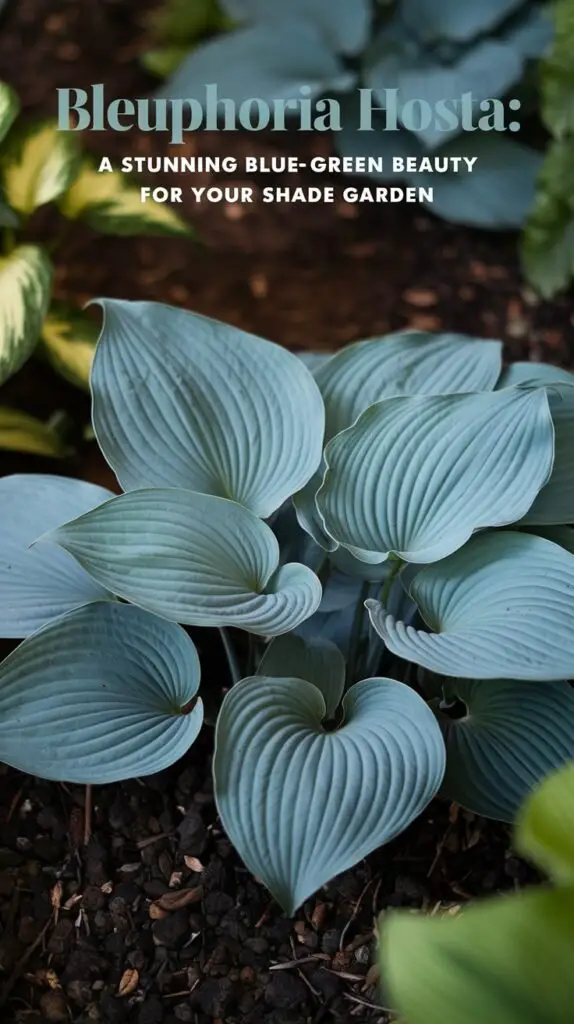
As a horticulturist specializing in shade perennials for over two decades, I’m excited to share my expertise on the Bleuphoria Hosta. This remarkable plant has been turning heads in the gardening world, and for good reason. Let’s dive into the world of this blue beauty and explore why it might be the perfect addition to your garden!
What is Bleuphoria Hosta?
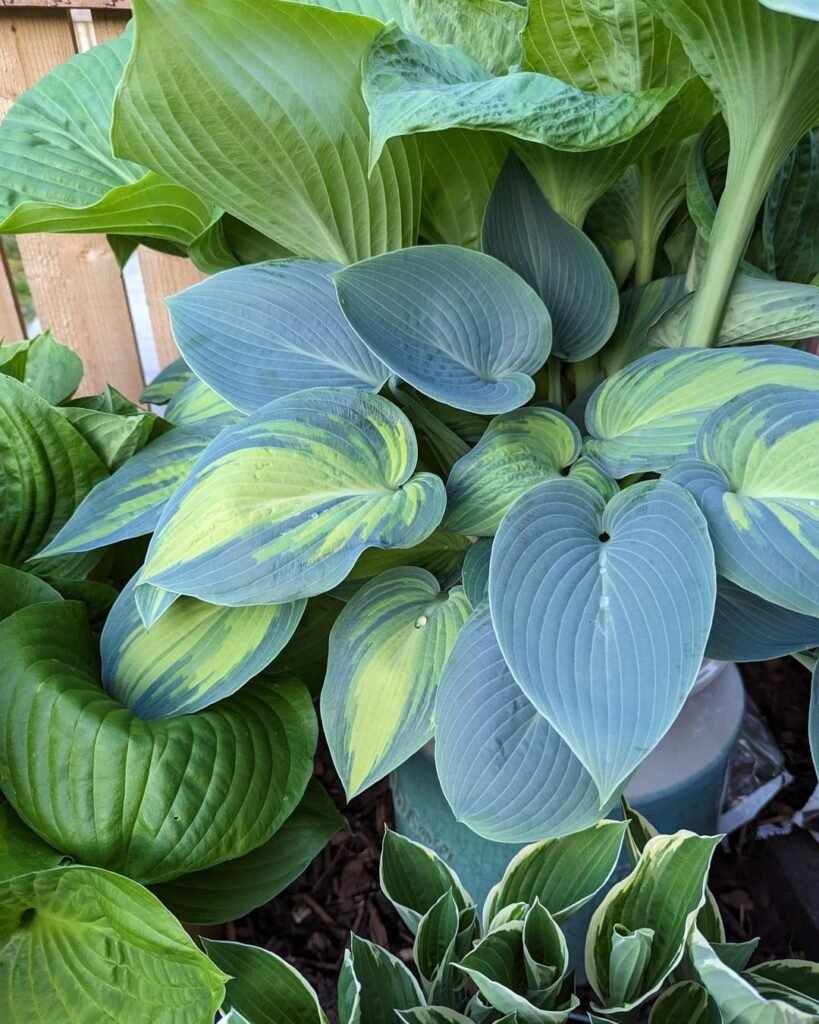
The Bleuphoria Hosta is a cultivar of the genus Hosta, a group of plants beloved for their foliage and shade tolerance. Here are its key characteristics:
- Scientific Name: Hosta ‘Bleuphoria’
- Plant Type: Herbaceous perennial
- Mature Size: Typically 18-24 inches tall and 30-36 inches wide
- Foliage Color: Intense blue with a waxy coating
- Leaf Shape: Heart-shaped leaves with moderate corrugation
- Flowers: Pale lavender, appearing in mid to late summer
2024 Trend: The Bleuphoria Hosta is gaining popularity in minimalist garden designs, where its bold color and form create striking focal points.
Why Choose Bleuphoria Hosta?
- Unique Color: Its intense blue foliage adds a rare and refreshing hue to shaded areas.
- Low Maintenance: Once established, it requires minimal care.
- Shade Tolerant: Thrives in areas with partial to full shade.
- Deer Resistant: Generally unappealing to deer, making it great for woodland gardens.
- Versatile: Works well in borders, containers, and as a groundcover.
2024 Update: Recent studies show that blue-leaved plants like Bleuphoria can have a cooling effect on garden microclimates, making them increasingly valuable in urban heat islands.
How to Grow Bleuphoria Hosta
Planting
Best Time to Plant: Spring or early fall
Steps:
- Choose a shaded location with well-draining soil.
- Dig a hole twice the width of the root ball and as deep.
- Place the plant in the hole, ensuring the crown is at soil level.
- Backfill with soil and water thoroughly.
Pro Tip: Add organic matter to the planting hole to improve soil structure and nutrition.
Soil and Water Requirements
- Soil Type: Rich, well-draining soil with a pH between 6.0 and 7.5
- Moisture: Consistent moisture is key, especially during the growing season
2024 Innovation: New water-retaining soil amendments are making it easier to maintain ideal moisture levels for hostas in drought-prone areas.
Light Requirements
- Ideal Light: Partial to full shade
- Color Retention: The blue color is most intense in areas with morning sun and afternoon shade
Pro Tip: In hotter climates, provide more shade to prevent leaf scorching and color fading.
Fertilizing
- Frequency: Once in spring with a balanced, slow-release fertilizer
- Type: 10-10-10 or a fertilizer specifically formulated for hostas
2024 Trend: Organic, seaweed-based fertilizers are gaining popularity for their micronutrient content, which can enhance the blue coloration of hostas.
Pruning and Maintenance
- Remove spent flower stalks after blooming
- Cut back foliage in late fall or early spring before new growth emerges
- Divide every 4-5 years to maintain plant vigor and propagate
Pro Tip: Leave fall foliage in place to protect the crown during winter, especially in colder regions.
Design Ideas with Bleuphoria Hosta
- Contrast Planting: Pair with golden or chartreuse plants for a striking color contrast.
- Mass Planting: Create a sea of blue in shaded areas for a calming effect.
- Container Gardening: Use as a centerpiece in large shade containers.
- Woodland Garden: Incorporate into naturalistic shade gardens with ferns and other native shade plants.
- Border Edging: Line shaded pathways or borders for a neat, organized look.
2024 Design Trend: “Cool Gardens” focused on blue and silver foliage plants are emerging as a response to increasing urban heat, with Bleuphoria Hosta as a star player.
Common Problems and Solutions
- Slug Damage:
- Symptom: Holes in leaves
- Solution: Use organic slug deterrents or copper tape around plants
- Leaf Scorch:
- Symptom: Brown, crispy leaf edges
- Solution: Increase shade or improve watering practices
- Crown Rot:
- Symptom: Plant collapse, especially in overly wet conditions
- Solution: Improve drainage and avoid overwatering
2024 Update: New environmentally friendly slug control methods using nematodes are showing promise in hosta gardens.
Companion Plants for Bleuphoria Hosta
- Heuchera ‘Caramel’
- Japanese Painted Fern
- Astilbe
- Bleeding Heart
- Brunnera macrophylla ‘Jack Frost’
Pro Tip: Choose companions with similar water and shade requirements for a cohesive, low-maintenance garden design.
Embracing the Blue in Your Garden
The Bleuphoria Hosta offers a unique opportunity to bring a cool, calming presence to your shade garden. Its striking blue foliage, easy care requirements, and versatility make it a valuable addition to any landscape design.
As we move through 2024, the trend towards creating restful, cooling garden spaces is only growing stronger, and the Bleuphoria Hosta is perfectly positioned to meet this need. Whether you’re a seasoned hosta collector or a newcomer to shade gardening, this blue beauty deserves a place in your outdoor sanctuary.
Remember, successful gardening is about experimentation and finding what works best in your unique environment. Don’t be afraid to try different combinations and placements to showcase your Bleuphoria Hosta to its fullest potential.
For more information on hostas and shade gardening, visit resources like the American Hosta Society or your local cooperative extension office. Happy planting, and may your garden be filled with the soothing blue hues of Bleuphoria!
For more gardening tips and plant care guides, visit usagardenhub.com.

